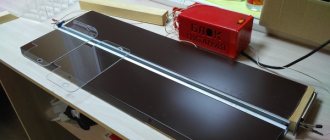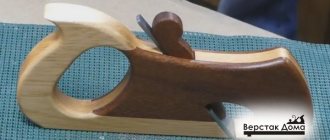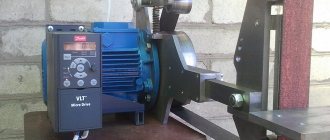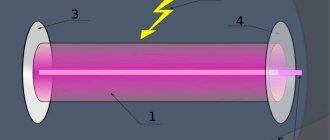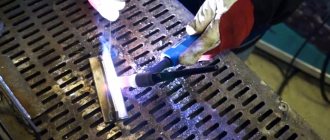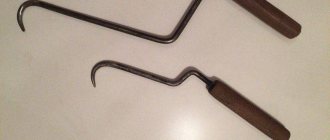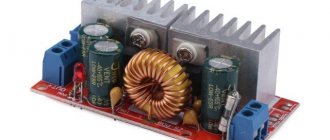I understand that I’m not the first and I’m not the last to create my own vacuum forming machine, but I still want to share with you an article about it.
The design for do-it-yourself vacuum forming is standard: a wooden frame to hold the material that is being shaped, and a wooden box with holes in the lid on top to act as a vacuum chamber. The most inexpensive option.
Main varieties
Today, two types of vacuum presses are produced:
- conventional type equipment (such presses are used in cases where it is necessary to exert the most gentle influence on the workpiece, and are capable of creating a pressure whose value does not exceed 0.95 kg/cm2);
- high-pressure vacuum presses (equipment of this type is capable of providing pressure up to 8.5 kg/cm2).
In a conventional press, the facing material is pressed against the part by atmospheric pressure, and in a press with excess pressure, compressed air is additionally pumped into the cavity above the workpiece
Equipment of the first type is used in cases where it is necessary to cover products with a simple configuration with PVC film or veneer. Vacuum presses capable of creating high pressure are used for veneering or covering with PVC film parts of complex shapes. In addition, such equipment is often used as a vacuum molder, with the help of which three-dimensional products of various configurations are made from sheet plastic.
The most common two layout options for vacuum presses are:
Now let's start making the mold
Any materials can be used as a form: wood, plaster, etc.
If high smoothness of the form is not required, then polyurethane foam can be used, since it can be easily processed with a stationery knife.
If there are concave places on the form, then it is necessary to drill a hole in each recess with a thin drill d = 0.1-0.5 mm.
Design features
The vacuum press for furniture facades and other elements of its design consists of the following elements:
Basic elements of a vacuum press
Most models of vacuum presses are additionally equipped with one or more shafts installed at the end of the equipment. Such shafts, which make working on a vacuum press more convenient and reduce the time required to complete technological operations, are used to install rolls of film used for coating.
Many modern models of vacuum presses for MDF and chipboard can operate in automatic mode, which is ensured by CNC systems installed on such equipment. The use of CNC vacuum presses is especially relevant for enterprises that produce furniture in series, when such equipment has to be used to cover many similar parts with film or veneer. In such cases, CNC systems installed on such equipment make it possible to increase its productivity and, accordingly, reduce the cost of manufactured products.
Industrial CNC membrane vacuum press with heated top and bottom platen
Painting the product
All that remains is to paint the product.
Using PET (polyethylene terephthalate - what bottles are made of) for molding, you can make blister packs or extraordinary holiday jelly molds.
As you can see, making a vacuum machine with your own hands is not at all difficult and not very expensive.
As I said earlier, vacuum forming technology can be used in modeling, etc.
How to choose the right equipment
When choosing a membrane-vacuum press to solve certain problems, you should focus on its most important parameters.
Pump brand and country of origin
Vacuum presses can be equipped with pumps from foreign (usually Italian) or domestic manufacturers. In the first case, a membrane vacuum press will cost more, but the pump installed on it will be more reliable. Meanwhile, domestic vacuum pumps are also quite reliable, but most importantly, there should be no problems with their repair, since finding spare parts for domestic pumping equipment is not particularly difficult.
The reliability and performance of the press depends primarily on the vacuum pump
Vacuum table lining material
It is very important that it is metal, and not chipboard sheets, which some manufacturers use for such purposes. After a short period of use, tables made from chipboard will simply become unusable.
Dimensions
This is one of the most important characteristics that you should pay special attention to when choosing a membrane vacuum press. The dimensions of the vacuum press primarily determine the number of workpieces that can be processed on it simultaneously. Naturally, the larger this quantity, the more productive the vacuum press will be. Meanwhile, it should also be taken into account that the size of the equipment directly affects its cost, so in this case the best option should be chosen.
Vacuum presses are manufactured in standard sizes, for example, for veneer veneering, the most commonly used sizes are 2500x1500, 3000x1500, 2500x1200 or 3000x1200 mm
Type of heating devices
The vast majority of experts advise choosing vacuum presses equipped with KGT lamps, when using which the film glued to the top of the bent parts does not melt or burn through. In the same case, if you select equipment equipped with heating elements, you will have to constantly monitor that the distance from such heating elements to the very top of the workpiece surface is at least 150 mm.
Press brand
Since vacuum presses are quite expensive equipment, it is not worth choosing a device from unknown manufacturers, which will then have to be constantly repaired.
You can start vacuum forming
Since we will heat the plastic in the oven, we will work in the kitchen closer to the oven.
We connect the vacuum cleaner to the vacuum chamber. We place our form on the working surface of the vacuum chamber, in the center. Just don’t forget to place 1mm thick pads (coins) under the mold. This is done so that the plastic completely fits the bottom of the mold.
Cut a sheet of plastic around the perimeter of the frame. Any plastic intended for thermoforming (PET, PVC, etc.) is suitable for this purpose. Since the “vacuum” will be created by a vacuum cleaner, we cannot use thick plastics. The thickness of the plastic depends on the suction power of the vacuum cleaner; therefore, it is possible to use plastic with a thickness of 0.1-0.4 mm. We nail the plastic with staples every 2 cm. Do not spare the staples, since during molding the soft plastic will try to break out of the fastening.
Place the frame in the oven and set the temperature to approximately 190 degrees (each type of plastic has its own softening temperature, so check with the seller for more accurate figures).
We wait until the plastic softens and begins to sag freely. We take out the frame. Don't forget to wear gloves, as the frame will be very hot.
Immediately, so that the plastic does not cool down, move the frame onto the vacuum chamber, press it and turn on the vacuum cleaner.
When the vacuum cleaner has pulled out all the air from under the mold, you must wait another 20 seconds, after which you can turn off the vacuum cleaner. If during molding the plastic does not tightly wrap around the mold in some places, you can use a hair dryer to soften the plastic. Just don't overdo it so you don't burn a hole.
When the plastic has cooled, you can take out the mold.
The excess is cut off with scissors or a knife; for more precise work, you can use a Dremel.
Matrix milling. Second mistake
The first step, when you have a model, is to prepare a matrix.
On forums I read about using chipboard, but in practice MDF is most often used. Molds that require greater precision and are designed to produce a larger number of copies are made of aluminum. Our second mistake was choosing a contractor to mill the model. Since our model is 1000mm x 800mm x 250mm, it was necessary to immediately look for a contractor with the appropriate working field of a CNC machine. We believed that it was possible to assemble a matrix of 12 parts without any problems.
Having lost time and money, we found another contractor who made the matrix in two parts.
After milling the MDF, the resulting parts must be glued together, sanded and coated with a layer of epoxy resin to create a protective layer.
